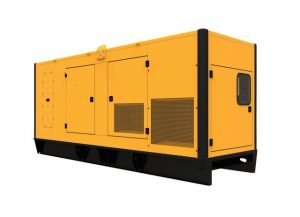
Doug Sharpe
President of Elasto Proxy
Why would you pick a specialty polymer that costs more than most engineering thermoplastics (ETPs)? How can your company compete if buyers choose higher-cost, high-performance thermoplastics (HPTPs) instead of lower-cost ETPs like nylons and polycarbonates? Material properties matter, of course, but do you really need a more expensive thermoplastic for your application?
Material Selection
The consequences of choosing the wrong material can be costly. In industries such as aerospace and mass transit, part failure can also be catastrophic. High-performance thermoplastics are higher-priced, but they provide greater thermal resistance than other engineering polymers. For example, many HPTPs can withstand long-term service temperatures of 150° C and short-term temperatures of 250° C.
Compared to other thermoplastics, HPTPs also offer greater thermal stability over both the short and the long term. This includes higher melting points, heat deflection temperatures, glass transition temperatures, and continuous-use temperatures. High-performance thermoplastics also combine stronger resistance to burning with improved mechanical properties and chemical resistance.
Material selection isn’t just a matter of choosing one polymer instead of another, however. According to a recent study by Lux Research, HPTPs have “the potential to replace advanced metal, ceramic, and other composite parts”. In terms of material properties and costs then, buyers are now comparing HPTPs to many different types of materials. In industries such as electronics, HPTP usage is growing.
Existing and Emerging Markets
In its report entitled, “Innovating High-Performance Thermoplastics: Scouting Process and Material Technologies for Existing and Emerging Markets,” Lux Research forecast sales for three types of HPTPs: sulfur-containing composites, polyketones, and polyimides. All three HPTP families are used commonly and have outstanding high-temperature properties.
Several of the study’s findings are of special interest to industry. For example, Lux Research predicts that as 3D printing evolves from prototyping to parts manufacturing, demand for HPTP feedstocks will grow more rapidly than for other types of materials. The Boston-based research firm also forecasts increased demand for lightweight HPTPs for passenger seats in high-speed rail.
Today, Elasto Proxy works with partners who embrace innovation, but must also meet a range of requirements. From 3D printing for auto parts prototyping to helping the mass transit industry meet flame, smoke, and toxicity (FST) requirements, our solutions providers have the application knowledge and technical expertise to help buyers evaluate materials.
How Can We Help You?
Are you wondering whether high-performance thermoplastics (HPTPs) are right for your application? How can Elasto Proxy help you? For 25 years, we’ve been solving sealing and custom fabrication challenges by listening to partners and understanding all of their needs before recommending solutions.
Talk to us today. Look for a post with a link to this blog entry on LinkedIn, Facebook, Google+, and Twitter. Elasto Proxy has pages on all of these social media websites, so all that’s missing is you. I hope you’ll subscribe to our free e-newsletters as well. They’re a great source of information delivered right to your email inbox, and provide links to blog entries like this one.









